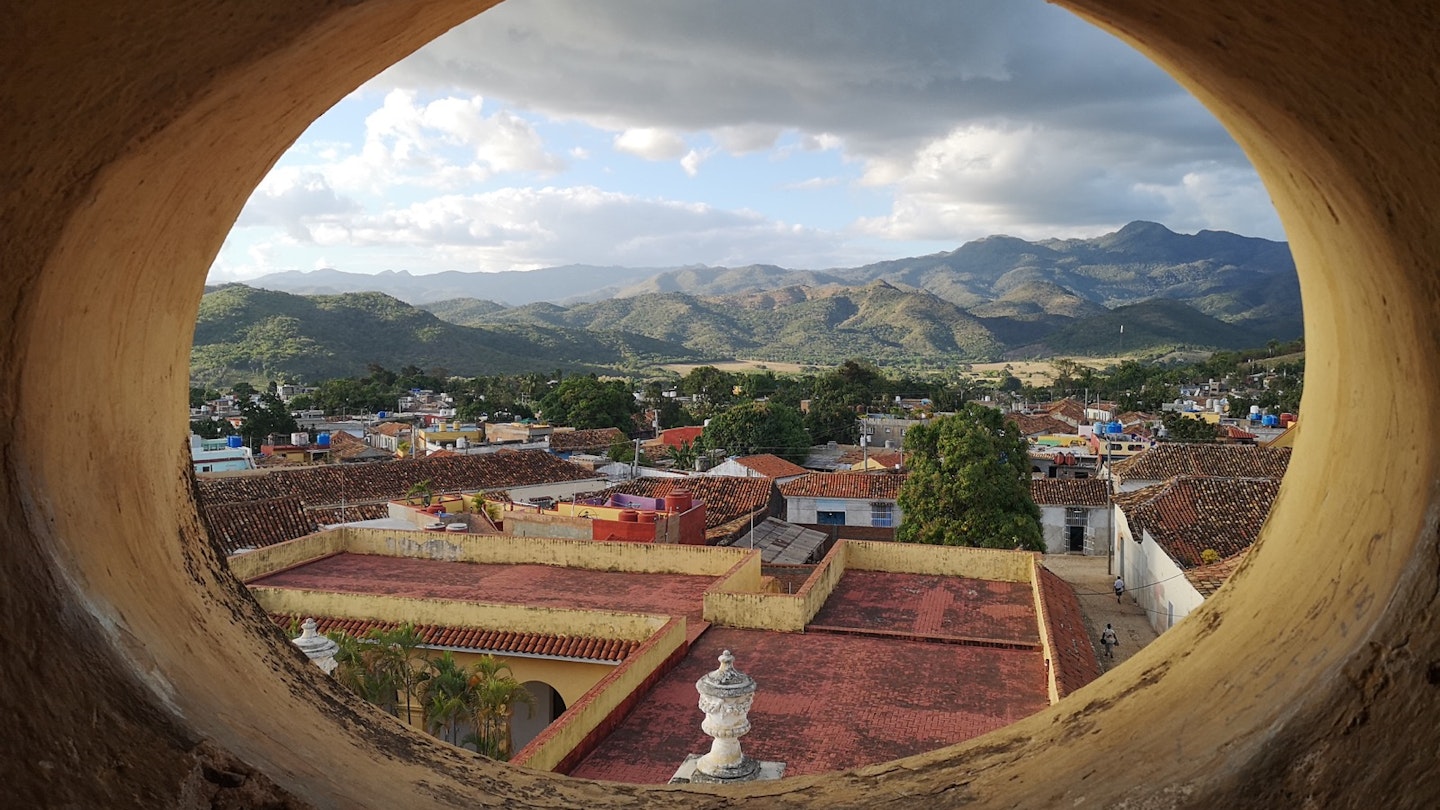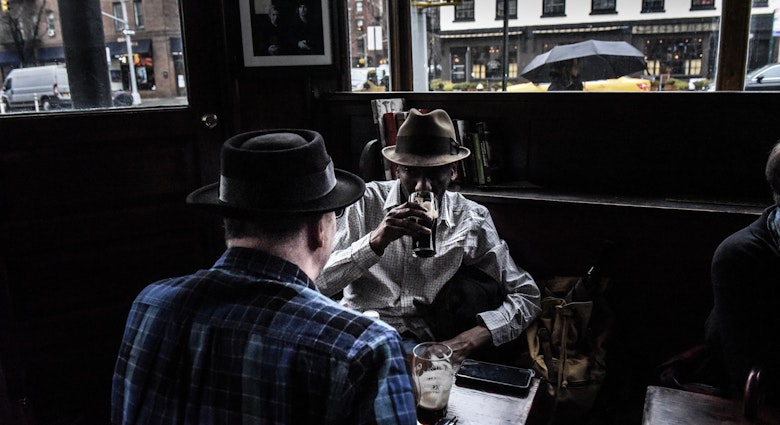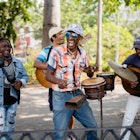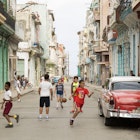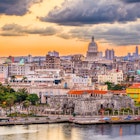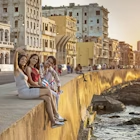From the copper-hued farms of rural Viñales to the rainbow-colored plazas of Trinidad, the places beyond Cuba’s capital offer up a mix of contrasts. Spend a day hiking sunbaked trails, practicing salsa moves in the center of town or swimming in the Bay of Pigs – Cuba’s diverse countryside definitely warrants in-depth exploration.
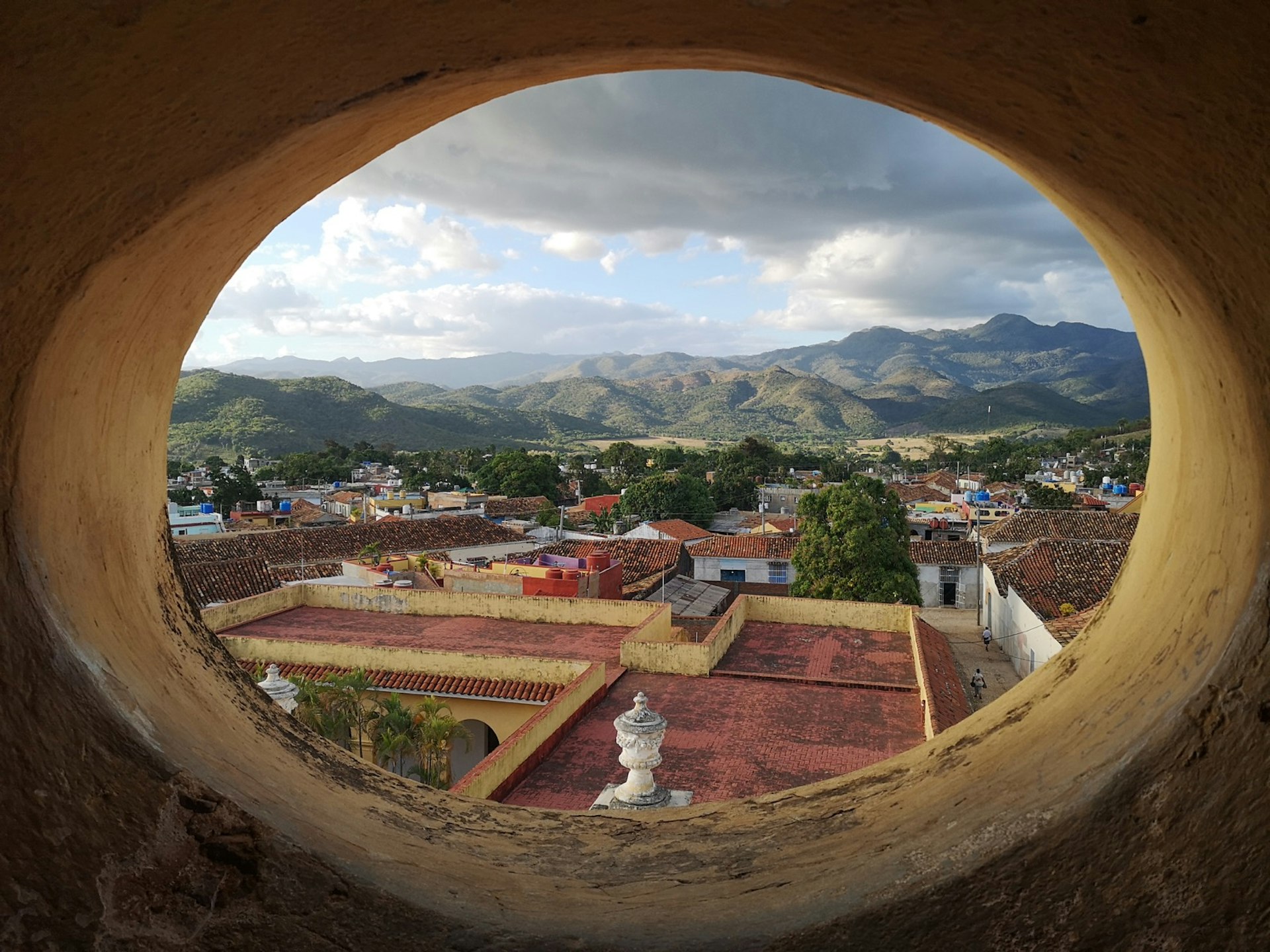
Trinidad
Wander the cobbled streets of the old town
An undeniable chunk of Cuba’s charm lies in its exquisite architecture – at times intact and perfectly manicured, at others weathered, blackened and crumbling.
Colonial-era town Trinidad shows off the intact variety at its very best, with perfectly painted houses in lemon, pink, turquoise and blue framing cobbled streets and colonial Spanish mansions telling of the town’s wealthy past – when it was at the center of the sugarcane industry.
Now musicians pluck guitars on cafe patios, artisans sell crafts on laid-back market stalls and horse-drawn carts jolt along in much the same way they have for more than a century.
It’s easy to spend hours on end wandering its labyrinthine streets and plazas, but the best way of seeing it all is from the top of the bell tower (technically the Museo Nacional de la Lucha Contra Bandidos). Here winding, narrow steps lead to unrivaled views over the red-tiled roofs below and the forest-green mountains beyond, as they ripple off into the horizon, bathed in gold at sunset.

Dance salsa on the steps
It’s perhaps salsa for which Trinidad is best known. Locals dance this sensual, eight-beat step with an enviably cool, liquid-like smoothness, but you don’t have to be a pro to give it a go.
Several spots offer lessons, including Casa de la Música, an outdoor dance floor set on the town’s iconic steps (just off Plaza Mayor), where professionals move to the percussive beat of live salsa every night, while tourists sit sipping mojitos on al fresco tables beneath the breezy, twilight sky.
Just as lively (and less touristy) is Rincón de la Salsa, a fairy-lit cocktail bar which hosts nightly live bands and lures seriously good dancers swaying their hips to salsa, bachata, Afro-Cuban and other Latin beats.
Afterwards, many head off to La Cueva – a 3000-capacity club housed in an underground, glowing cave filled with acrobats, fire-walkers, glass-eaters and cabaret performers that’s every bit as surreal and outlandish as it sounds.

Swim under a waterfall
Beyond the city itself there’s plenty to see, not least Parque El Cubano, a forested national park located about a 15-minute drive from the center of town.
At its heart is the Javira waterfall, which tumbles down honey-hued rocks into a swimming hole painted a deep, vivid emerald, leading into a dewy, bat-filled cave. It’s reachable via the Huellas de la Historia trail (2.2 miles/3.6km). The trek features rocky paths and a bouncy, swinging wooden bridge.

Viñales
Visit a tobacco farm
If you’re after a more rural escape, Viñales beckons. Set in the northwest of the island, this bustling village feels distinctly wild west with its country-style restaurants and cowboy-hatted locals. And while the town’s center is inescapably touristy, much of the surrounding countryside is satisfyingly deserted.
Viñales is set in a valley in the heart of Pinar del Río – one of the biggest tobacco-producing regions in the country, meaning tobacco farms are everywhere you look. Bookable tours, available in town, give visitors a unique glimpse into the lives of the people of Viñales. Farmers explain the production process and demonstrate how to hand-roll plump, artisanal cigars before giving you the chance to buy them fresh. Many travelers tag on a visit to a coffee farm, where you can sample rich, aromatic coffee directly from the source.
Explore the countryside
It’s not all about the fincas (farms) here, though. Hiking trails and dirt tracks scattered across the valley provide a rare opportunity to wander round at leisure (a guide is obligatory for hiking in most parts of Cuba). Horseback riding is also popular, with local guides from the campo (field) taking you plodding along the baked and arid tracks.
Both are excellent ways of taking in the glorious scenery; think leafy tobacco fields, copper-red soil and thatched-roof farm houses scattered among soaring mogotes (limestone rock formations rising up like humps across the region).
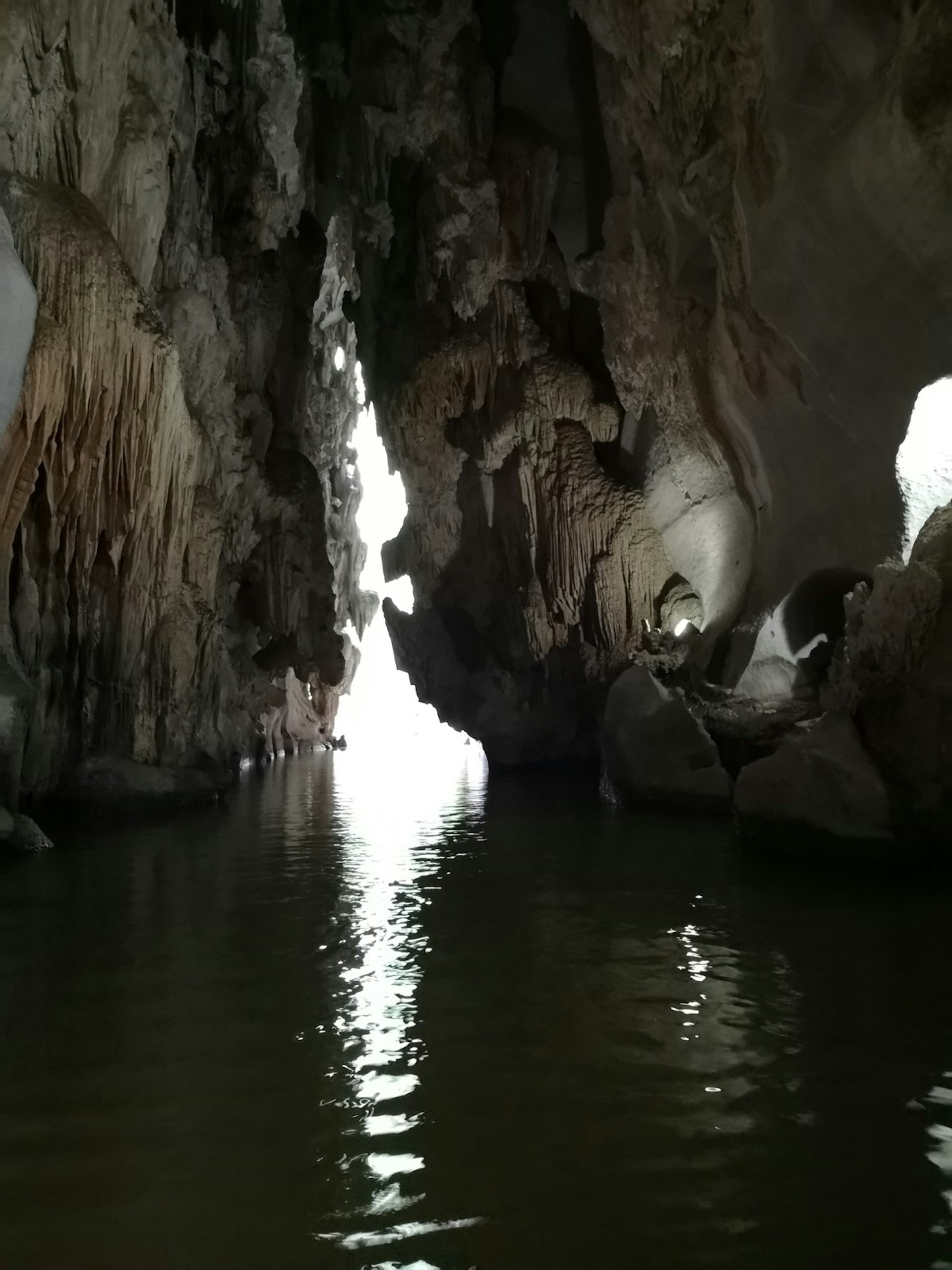
Visit an ancient indigenous cave
Alongside its hiking trails, the region is a hotspot for underground caves, and just outside the village sits one of the most popular – Cueva del Indio (reachable by bike or taxi).
This cluster of underground chambers was once an indigenous dwelling and now offers visitors the chance to wander past twisted, monstrous rock shapes swirled with turquoise, green, copper and other colors, before hopping on a boat for a short trip in the dark along an inky black, underground river.
Further afield you’ll find the more impressive Santo Tomás caves – the biggest cave system in the country, home to more than 26 miles (46km) of galleries. Ninety-minute guided tours explore a section of it, where murky pools sit beside huge stalagmites and stalactites.
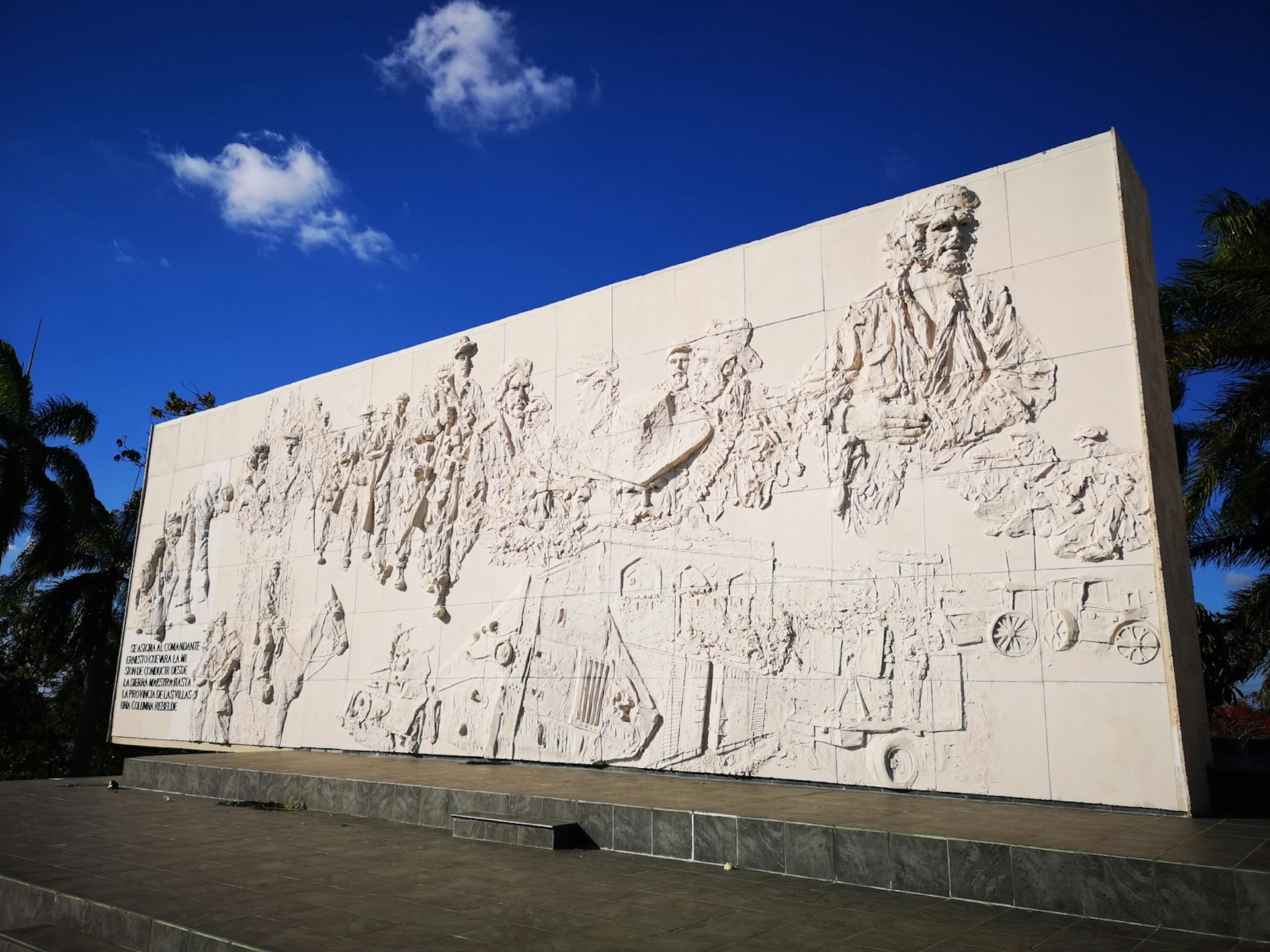
Learn about revolutionary history
Outside of Trinidad and Viñales there’s plenty more to see, including in the way of history. Among the key sights is the Che Guevara Mausoleum in Santa Clara, where revolutionaries overthrew authoritarian ruler Fulgencio Batista in 1958 under Guevara’s command.
Today, the memorial contains the bodies of Guevara and 29 others and houses an intriguing museum focused on the life of the Argentine leader, alongside a domineering bronze statue of him built in 1987 to commemorate 20 years since he was killed in Bolivia. It’s peaceful and poignant and worth a visit if passing through on the way to Trinidad from Havana.

Swim in the Bay of Pigs
Just as iconic is the Bay of Pigs, where the CIA launched a 1400-man invasion in 1961 with the aim of overthrowing Fidel Castro and his communist ideals. They were quickly defeated following a counter-attack, souring the already struggling US–Cuban relations.
Now the bay is a stretch of beautifully clear, turquoise water fringing chalky white sand ideal for swimming and snorkeling. Striking coral formations and impressive biodiversity attract divers. The Bay of Pigs fuses history and head-turning scenery together in a way Cuba seems to have truly mastered.
https://shop.lonelyplanet.com/products/cuba-travel-guide-9
